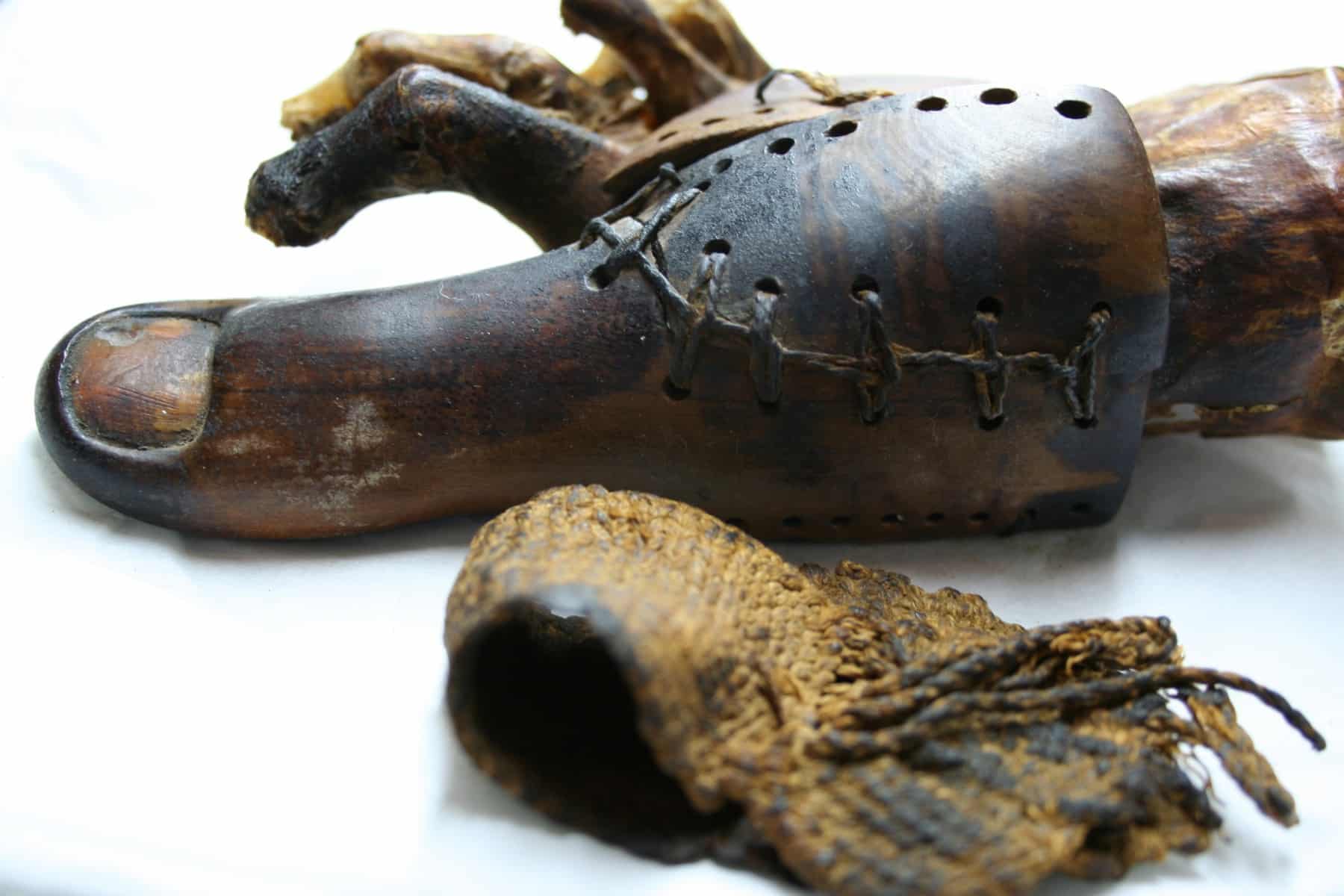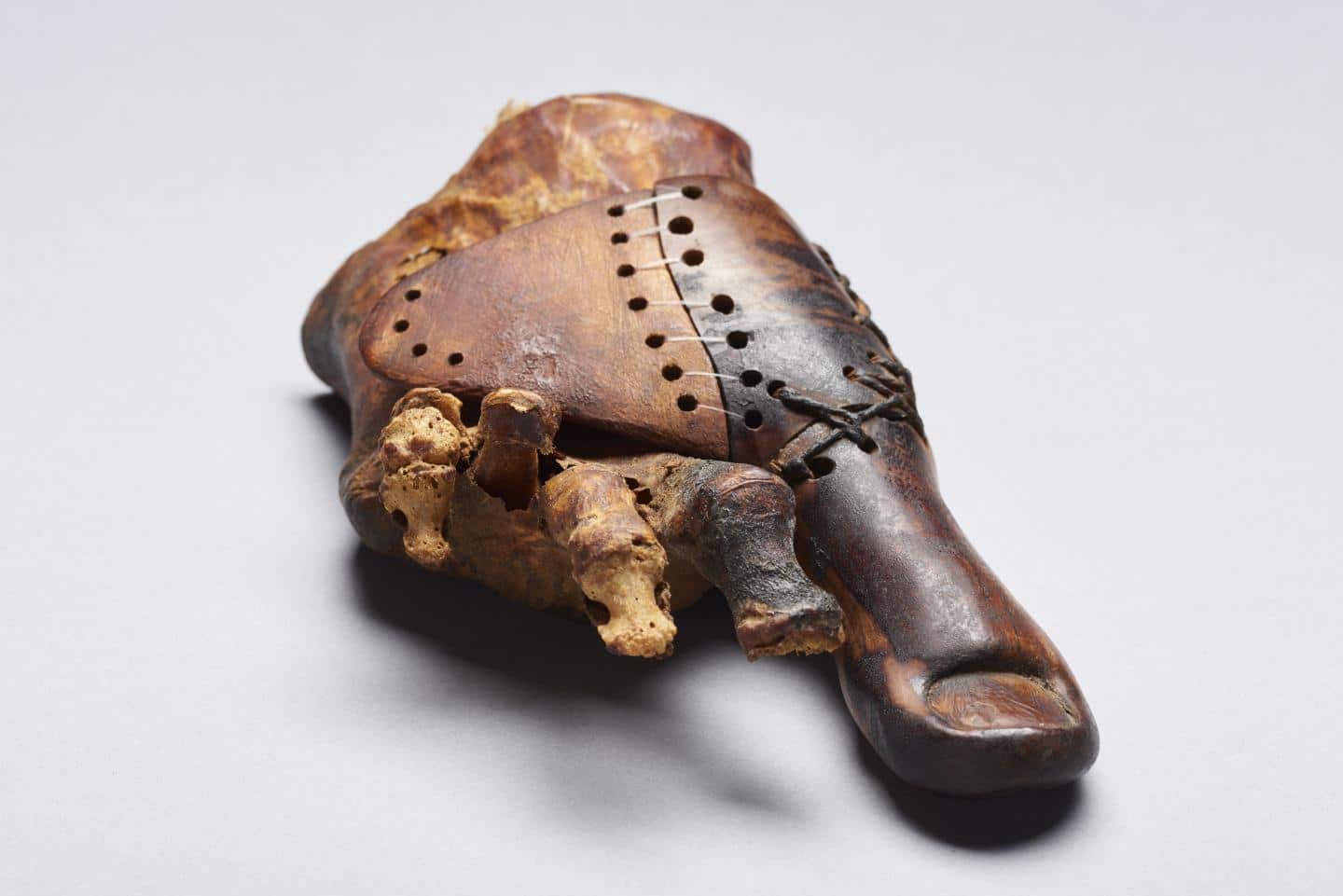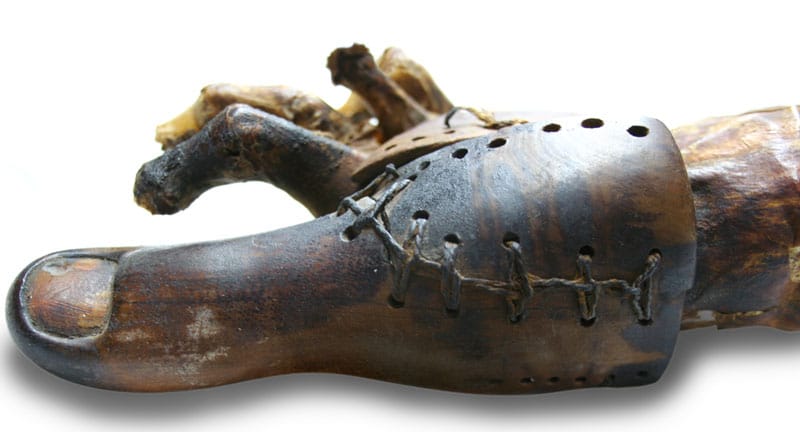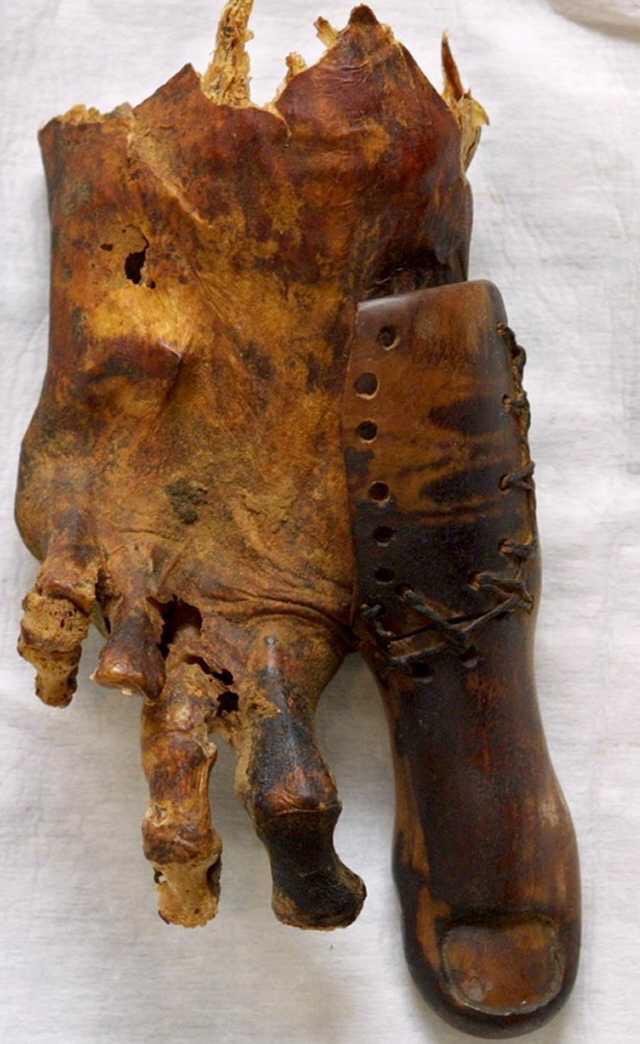Ancient Artificial Toe Unearthed in Thebes, Egypt: A Glimpse into the Past
Archaeological discoveries have always been a window to our ancient history, shedding light on the lives and innovations of civilizations long gone. Among the countless fascinating artifacts unearthed throughout the ages, one particularly intriguing find stands out: the world’s oldest artificial toe. Constructed from wood and leather, this ancient prosthetic dates back to a remarkable period between 950 and 710 B.C. and was discovered in Thebes, Egypt. The toe’s remarkable craftsmanship and its implications for ancient medicine make it a compelling testament to human ingenuity and the quest for mobility even in ancient times.
The discovery of the world’s oldest artificial toe in Thebes, an ancient city on the east bank of the Nile, offers a glimpse into the lives of individuals who faced physical challenges and sought solutions during this time period. The artificial toe was found in a burial site, where it had been laid to rest with a female mummy. Its inclusion in the burial hints at the importance placed on mobility and physical well-being in ancient Egyptian society.
Crafted from wood and leather, the ancient artificial toe showcases the advanced skill and ingenuity of its creators. Detailed examination of the artifact reveals its remarkable construction, which included intricate straps and bindings to attach the prosthetic to the wearer’s foot. The careful choice of materials suggests that functionality, comfort, and durability were key considerations in its design.
The purpose of this artificial toe, known as the “Cairo Toe,” is believed to have been to provide stability and assist with walking for an individual who had lost their toe, likely due to injury or disease. The prosthetic’s design indicates a sophisticated understanding of anatomy and biomechanics, as it was shaped to mimic the natural form and movement of a human toe. This ancient example highlights the significance placed on mobility and quality of life even in antiquity.
The discovery of the Cairo Toe offers valuable insights into ancient Egyptian medical practices and prosthetic technology. It reveals the existence of ancient orthopedic interventions, demonstrating that the pursuit of medical advancements dates back millennia. Moreover, the significance placed on physical well-being and the preservation of mobility reflects the importance ancient Egyptian society placed on maintaining a high quality of life, even in the face of physical challenges.
The ancient wooden and leather toe serves as a testament to the resilience and resourcefulness of our ancestors. It highlights the enduring human desire to overcome physical limitations and adapt to changing circumstances. Today, with the advancements in prosthetic technology, we can appreciate the progress made over centuries to provide functional and lifelike artificial limbs that greatly enhance the lives of those in need.
The discovery of the world’s oldest artificial toe in Thebes, Egypt, showcases the remarkable craftsmanship and ingenuity of ancient civilizations. Dating back to between 950 and 710 B.C., this wooden and leather prosthetic reveals a sophisticated understanding of anatomy and biomechanics. It underscores the ancient Egyptians’ commitment to maintaining mobility and quality of life, offering valuable insights into their medical practices and cultural values. As we marvel at this ancient artifact, we are reminded of the timeless human spirit that drives us to overcome physical challenges and forge a path towards a better future.
Hits: 5






